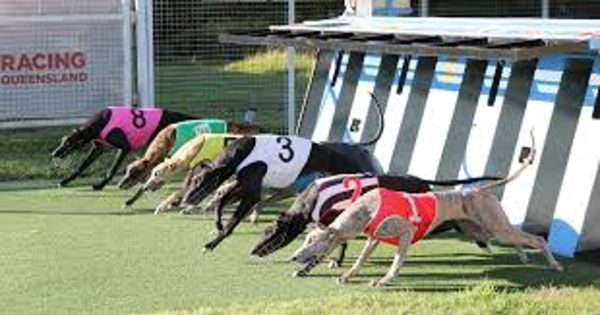by Warren Young
Adjunct Associate Professor, School of Science, Psychology and Sport, Federation University Australia.
A typical greyhound race in Australia starts with 8 greyhounds. Historically, each dog has been allocated a starting position in a random draw, where box 1 is closest to the rail and box 8 is the furthest from the rail (Figure 1).

Unlike human sprint events between 100m & 400m, greyhounds cannot be restricted to run in lanes, and this means that they will often bunch up to negotiate a bend in an attempt to chase and catch a mechanical lure (Figure 2).

This bunching can result in collisions between dogs and end in horrific falls, causing fractured bones, and sometimes requiring the victim to be euthanised (Figure 3).

Some greyhounds have been observed at the start of races to head straight to the inside rail, whereas others have a tendency to run out wide. The tendencies of greyhounds to have a preference to head to the rail or run wider has recently led New Zealand Greyhound racing to adopt a Preferred Box Draw (PBD) system for certain races, rather than the traditional random box draw. The concept of a PBD is still evolving, but it initially involves allowing trainers to nominate their dog’s preference in one of three categories: railer, straight, or wide runners. To accommodate these preferences, railers are allocated the inside boxes (e.g. 1 & 2), straight runners the middle box positions (e.g. 4 & 5), and wide runners the outside boxes (e.g. 7 & 8). The aim of PBD is to reduce early interference and, ultimately, injuries on the racetrack. Further refinements could include the use of actual running strategies at race starts from past races, rather than solely relying on trainers nominations.
The racing industry hopes that the PBD system might produce fairer races by catering for the greyhound’s “preferred early racing traits”. More importantly, this system has the potential to reduce collisions, racing injuries and improve greyhound welfare.
What can Australia learn from the New Zealand experience?
There are some encouraging signs from recent injury data in New Zealand where a comparison was made between PBD and random box draws from races over a 9 month period (Table 1).
| Preferred box draw | Random box draw | |
| Falls | 2.4 | 4.1 |
| Fracture injuries | 1.3 | 2.9 |
| Deaths | 0.1 | 0.4 |
Although the data is expressed per 1,000 starts, which is questionable, it provides some evidence that the PBD system can be safer.
The Australian greyhound racing industry is lagging behind the lead from New Zealand. Western Australia and Queensland are currently trialling the system, but their focus appears to be on making races fairer rather than injury reduction. The two biggest racing jurisdictions, NSW and Victoria are still discussing PBD or have deferred a trial. If the Australian greyhound racing industry truly cares about the welfare of greyhounds, a trial and analysis of this procedure should be fast-tracked before more dogs are severely injured or killed.
Finally, it should be kept in mind that racing cannot be made entirely safe. This is because greyhounds can’t be enforced to run in lanes or steered by a jockey. Even newly developed straight tracks continue to host races where greyhounds are hurt.
